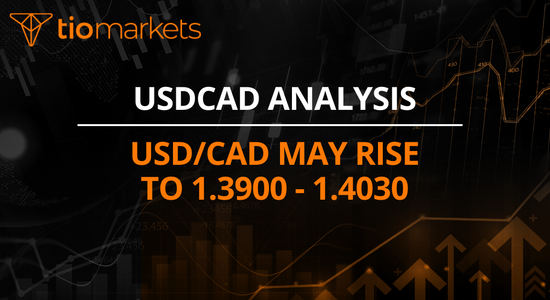Market Opportunities in Focus
BY Janne Muta
|Mart 19, 2024US Economy
The US economy, in February 2024, presented a nuanced picture of inflationary pressures, producer price movements, and consumer spending patterns, reflecting the complex interplay between supply chain dynamics, consumer demand, and pricing power.
The core consumer price inflation rate, a key indicator excluding volatile food and energy costs, dipped slightly to 3.8% year-over-year, just above analyst expectations of 3.7%. This near three-year low suggests a gradual easing of inflationary pressures, albeit at a slower pace than anticipated. The shelter index, a significant contributor to the core inflation, increased by 5.7%, indicating ongoing price pressures in the housing market despite a marginal slowdown from the previous month. Other sectors saw mixed trends, with significant hikes in motor vehicle insurance costs at 20.6% and a slight increase in medical care prices, while recreation and personal care experienced softer price growth.
Conversely, the overall annual inflation rate inched up unexpectedly to 3.2%, with a less than expected drop in energy costs and moderate increases in shelter and food prices. This uptick suggests that while certain inflationary pressures are abating, the economy still faces challenges from specific sectors, notably transportation, which saw a sharp price rise.
The Producer Price Index (PPI) for final demand surged by 0.6% month-over-month, the largest gain since the previous August, driven notably by a 1.2% rise in goods prices, underpinned by energy costs and food prices. This acceleration in producer prices hints at persistent upstream inflationary pressures, which could eventually filter through to consumer prices.
Retail sales data painted a picture of cautious consumer spending, with a modest 0.6% increase in February, below market expectations. This cautiousness, coupled with a significant decline in January, signals potential softening in consumer demand, possibly reflecting concerns over inflation and economic outlook. Notable gains were observed in sales at building materials, motor vehicles, and electronics stores, while furniture and clothing sectors saw declines, indicating varied consumer priorities and spending patterns.
In summary, the US economy is navigating a delicate balance between easing inflationary pressures, persistent upstream cost pressures, and cautious consumer spending, highlighting the challenges facing policymakers in steering the economy towards stable growth amidst uncertain global and domestic conditions.
The Federal Reserve
As the Federal Reserve's meeting approaches the market expectation is shifting away from immediate rate cuts towards a longer-term perspective on economic health and policy direction. The March meeting is highly unlikely to see rate reductions, with market consensus leaning towards adjustments in June (58.5% probability of a cut) or July (76.5% probability of a cut). Attention is therefore focused on the Fed's "dot plot" for clues on the neutral rate's future trajectory. This rate is pivotal for balancing economic growth without fuelling inflation or stifling expansion. Investors are closely monitoring Fed communications for indications on the likely terminal rate amidst evolving conditions, including disinflationary trends and robust labour market resilience. The markets are currently pricing the Federal Reserve's policy rates to settle somewhere in the region of 3.0-3.5% over the next two years.
US Stock Indices
Last week, stock markets experienced another decline, with the S&P 500, Dow Jones, and Nasdaq all closing lower due to higher than expected inflation data unsettling investors. This resulted in the first consecutive weekly drops in the major indices this year. Higher-than-anticipated consumer and producer price reports dampened hopes of imminent Federal Reserve rate cuts, contrary to Chair Jerome Powell's criteria for reducing rates based on inflation nearing its 2% target. Technology and communication sectors were particularly hit, alongside a notable dip in semiconductor stocks.
US Stocks
3M (MMM)shares rallied 12.3% last week primarily driven by the appointment of Bill Brown as the new CEO of the company. This leadership change was well-received by the market sending the stock substantially higher. Another factor supporting 3M’s rally was optimism over the strong momentum in its advanced materials, commercial solutions and auto original equipment manufacturer businesses. The company recently raised its earnings guidance for the first quarter of 2024. Currently 3M sees adjusted earnings in the range of $2.05-$2.20 per share for the quarter, up from $2.00-$2.15 projected earlier.
Freeport-McMoRan's (FCX) shares surged 11.5% due to a rally in copper prices after China's largest copper smelters agreed to cut production amidst raw material shortages, propelling copper prices to a seven-month high. This development comes as the company prepares to report its quarterly earnings, with expectations of $0.36 per share and revenues of $5.64 billion, marking a 4.8% increase from the previous year. Despite a downward revision in EPS estimates, the stock's performance highlights the impact of global copper market dynamics on FCX's valuation.
ConocoPhillips' stock saw a 6.98% increase last week. This growth is part of a broader trend, with the company's shares and the Oils-Energy sector both gaining over the past month. The upcoming earnings report is highly anticipated, with expectations of a $2.07 EPS—a 13.03% drop year-over-year—and revenues forecasted to decline by 4.92% to $14.75 billion. Despite a slight downward revision in EPS estimates, the company maintains a Zacks Rank #3 (Hold), indicating potential stability.
Gold and Oil
Gold experienced its first weekly decline in four weeks due to diminished expectations for a US interest rate cut. This change in outlook followed data revealing higher-than-anticipated US consumer and producer prices, suggesting persistent inflationary pressures. Consequently, traders reduced the likelihood of a rate cut by June, impacting gold's appeal as it struggles in high interest rate environments which are typically implemented to control inflation. Despite this, gold's role as an inflation hedge remains, with its price adjusting to the changing economic indicators and monetary policy expectations.
Oil prices ended the week higher by 4%, driven by a mix of factors including rising demand from U.S. refiners completing maintenance work, tightening motor fuel supplies, and geopolitical tensions. Despite a slight dip on Friday, the market was buoyed by the International Energy Agency's updated forecast, which raised its 2024 oil demand predictions for the fourth time since November. Additionally, the IEA anticipated a slight supply deficit, assuming OPEC+ maintains its output cuts. U.S. rig counts also saw their largest increase since September, indicating potential future output growth. These factors, combined with Ukrainian strikes on Russian oil refineries and a drop in U.S. crude stockpiles amidst rising gasoline demand, contributed to the weekly gain in oil prices. Potential disruptions from Houthi attacks on Red Sea shipping add to the risk of the price of oil rising further.
Trading Opportunities in Focus
- US Economy and Federal Reserve Outlook: Given the nuanced economic data and the Federal Reserve's cautious stance on interest rates, traders might consider positions that benefit from a more protracted period of higher rates. Defensive sectors typically resilient during such times, like utilities or consumer staples, could be appealing. However, if the Fed signals a more aggressive rate-cut stance in the future, growth sectors such as technology might rebound, offering a counter-play.
- US Stock Indices Reaction: The recent dip in major US stock indices due to inflation concerns suggests potential buying opportunities in sectors that were unjustly punished, particularly if one believes the inflation concerns are overblown. On the flip side, if inflation persists and further dampens consumer confidence, it may be wise to hedge against further market declines by considering short positions or defensive stocks.
- 3M's Leadership Change and Market Rally: 3M's positive response to leadership changes and raised earnings guidance suggests bullish sentiment that could continue. Traders might want to look for long trade opportunities in the 3M stock CFD to capitalize on this momentum. Alternatively, should the broader market's inflationary pressures and economic uncertainties negatively impact 3M's stock short positions could be considered.
- Gold and Oil: With gold's decline on reduced rate cut expectations and oil's rise due to supply constraints and geopolitical tensions, a commodities-focused strategy could involve going long on oil, expecting further supply disruptions or demand increases. Simultaneously, maintaining a position in gold could hedge against potential market volatility or a reversal in interest rate expectations. Conversely, if geopolitical tensions ease or if the US economy shows signs of significant slowing, reducing exposure to oil while increasing gold holdings could protect against downward price pressures on oil and capitalize on gold's safe-haven status.

Risk disclaimer: CFDs are complex instruments and come with a high risk of losing money rapidly due to leverage. You should consider whether you understand how CFDs work and whether you can afford to take the high risk of losing your money. Never deposit more than you are prepared to lose. Professional client’s losses can exceed their deposit. Please see our risk warning policy and seek independent professional advice if you do not fully understand. This information is not directed or intended for distribution to or use by residents of certain countries/jurisdictions including, but not limited to, USA & OFAC. The Company holds the right to alter the aforementioned list of countries at its own discretion.
TIOmarkets offers an exclusively execution-only service. The views expressed are for information purposes only. None of the content provided constitutes any form of investment advice. The comments are made available purely for educational and marketing purposes and do NOT constitute advice or investment recommendation (and should not be considered as such) and do not in any way constitute an invitation to acquire any financial instrument or product. TIOmarkets and its affiliates and consultants are not liable for any damages that may be caused by individual comments or statements by TIOmarkets analysis and assumes no liability with respect to the completeness and correctness of the content presented. The investor is solely responsible for the risk of his/her investment decisions. The analyses and comments presented do not include any consideration of your personal investment objectives, financial circumstances, or needs. The content has not been prepared in accordance with any legal requirements for financial analysis and must, therefore, be viewed by the reader as marketing information. TIOmarkets prohibits duplication or publication without explicit approval.

Janne Muta holds an M.Sc in finance and has over 20 years experience in analysing and trading the financial markets.
Related Posts
Trade responsibly: CFDs are complex instruments and come with a high risk of losing all your invested capital due to leverage.



